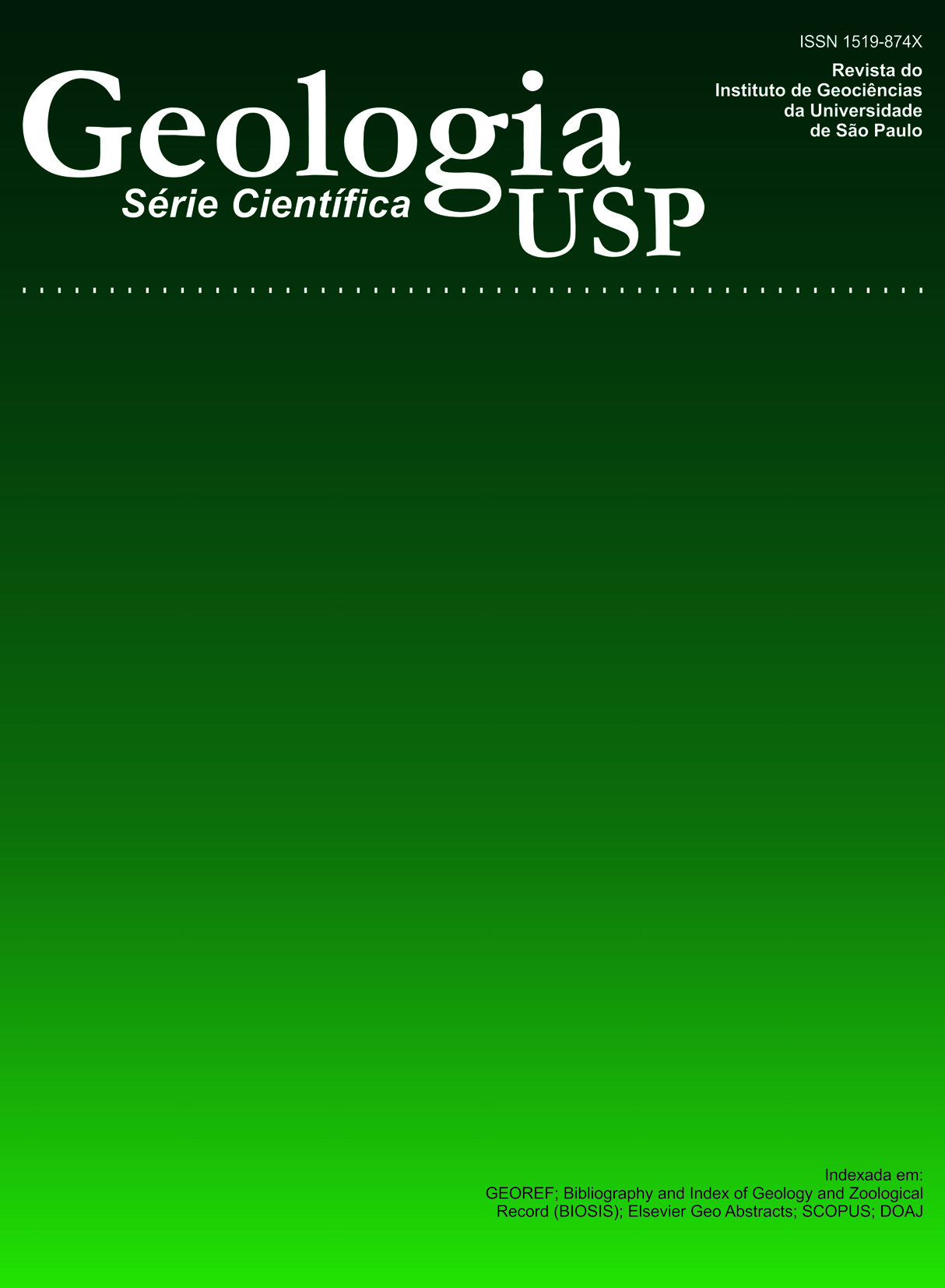A grande elevação eustática do mioceno e sua influência na origem do grupo barreiras
DOI:
https://doi.org/10.5327/S1519-874X2006000300002Keywords:
Barreiras Group, Miocene, Pliocene, BrazilAbstract
The Barreiras Group is a lithostratigraphic unit, which crops out extensively along the Brazilian coast, from the state of Amapá (North Brazil) to the state of Rio de Janeiro (Southeast Brazil). It is characterized by its continuous occurrence and geomorphological regularity. Its origin has been the subject of much discussion and controversy. Traditionally, it has been considered as continental, but recent studies have shown an irrefutable marine influence, as indicated by paleontological and sedimentological evidence. The palynological dating and correlation of the Barreiras Group with coeval lithostratigraphic units in offshore basins of the Brazilian continental margin and elsewhere in the world permit new interpretations in the light of sequence stratigraphy concepts. This integrated analysis permits correlation of the origin of the Barreiras Group with the Miocene global eustatic rise, which reached its maximum from the Burdigalian to the Serravallian (12 - 20 Ma). Deposition of the Barreiras sensu lato was interrupted in the Tortonian (early Late Miocene), when a global eustatic fall exposed and eroded part of the Barreiras and led to formation of prograding wedges in the offshore portion of continental margin basins. Renewed eustatic rise in the Pliocene (Zanclean, 4 - 5 Ma) initiated a second depositional phase, represented by the upper part of the Barreiras Formation. Erosion and reworking of the Barreiras Group during the Quaternary have contributed to the present configuration of the continental shelf.Downloads
Download data is not yet available.
Downloads
Published
2006-10-01
Issue
Section
Articles
License
Authors who publish in this journal shall comply with the following terms:
- Authors keep their copyright and grant to Geologia USP: Série Científica the right of first publication, with the paper under the Creative Commons BY-NC-SA license (summary of the license: https://creativecommons.org/licenses/by-nc-sa/4.0 | full text of the license: https://creativecommons.org/licenses/by-nc-sa/4.0/legalcode) that allows the non-commercial sharing of the paper and granting the proper copyrights of the first publication in this journal.
- Authors are authorized to take additional contracts separately, for non-exclusive distribution of the version of the paper published in this journal (publish in institutional repository or as a book chapter), granting the proper copyrights of first publication in this journal.
- Authors are allowed and encouraged to publish and distribute their paper online (in institutional repositories or their personal page) at any point before or during the editorial process, since this can generate productive changes as well as increase the impact and citation of the published paper (See The effect of Open Access and downloads on citation impact).
How to Cite
Arai, M. (2006). A grande elevação eustática do mioceno e sua influência na origem do grupo barreiras . Geologia USP. Série Científica, 6(2), 1-6. https://doi.org/10.5327/S1519-874X2006000300002





